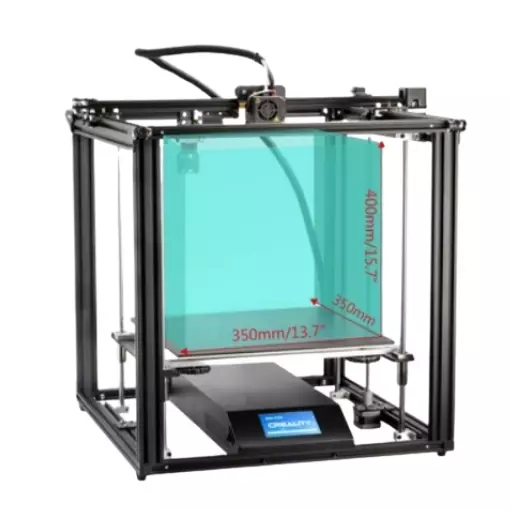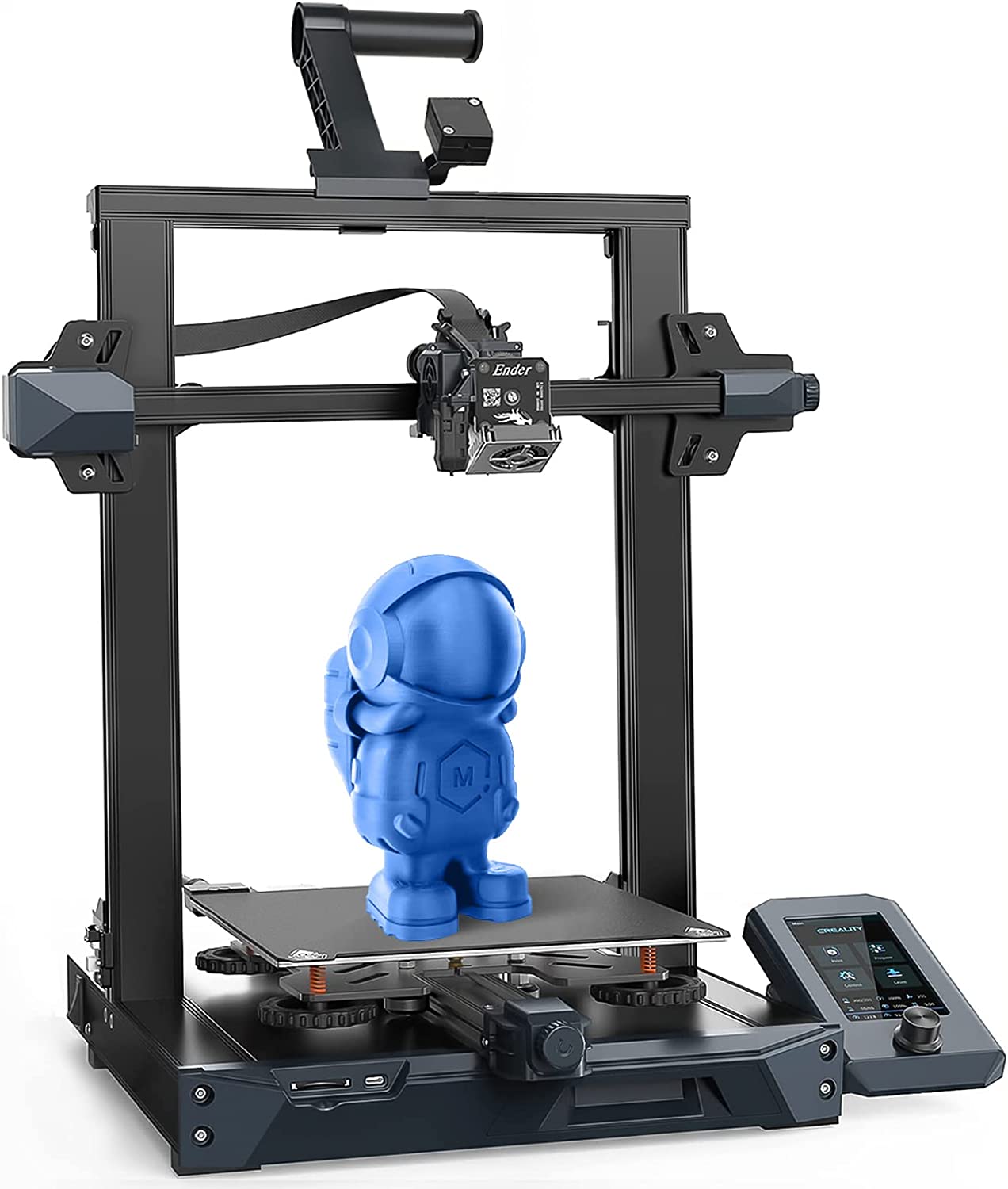Compare Ender 5 Plus vs Ender 3 S1
Comparison between the best 3D printers
Choose the best 3D printer at the best price. The cheapest 3D printers are here.
Buy a 3D printer here with 3D Fila.
 |
 |
|
| Model | Ender 5 Plus[BUY Ender 5 Plus] |
Ender 3 S1[BUY Ender 3 S1] |
| Printing Material | Filament | Filament |
| Buy Filament for Creality 3D Ender 5 Plus | Buy Filament forCreality 3D Ender 3 S1 | |
| Estimated price | $599,00 | $399,00 |
| Manufacturer | Creality 3D | Creality 3D |
| Release Year | 2019 | 2021 |
| Print Volume [mm] | 350x350x400 | 220x220x270 |
| Printer Size [mm] | 632x619x666 | 455x490x625 |
| Weight [kg] | 18,2 | 9,1 |
| Power Loss Recovery | YES | YES |
| Enclosed printer | NO | NO |
| Bed Leveling | Automatic | Automatic |
| Filament End Sensor | YES | YES |
| Bed type | Heated | Heated |
| Power supply system | Bowden | Direct Drive |
| Standard nozzle | 0,4 | 0,4 |
| Maximum Nozzle Temperature [°C] | 260 | 260 |
| Maximum Bed Temperature [°C] | 100 | 100 |
| Maximum printing speed [mm/s] | 180 | 180 |
| Filament holder | YES | YES |
| Camera for supervision | NO | NO |
| Recommended filaments | PLA, TPU, ABS, PETG | PLA, TPU, PETG, ABS |
| Recommended slicers | Cura, Simplify, Slic3r | Cura, Simplify, Slic3r, IdeaMaker, Creality Slicer e outros |
| Maximum Resolution [mm] | 0,1 | 0,05 |
| Processor | 32 bits | |
| Display | Touchscreen TFT 4,3'' | Display 4,3'' |
| Power Supply | 24V / 504W | |
| Connectivity | SD / USB | SD / USB |
| Operating systems | Windows, Mac, Linux | Windows, Mac, Linux |
| Date of registration in the system | 2021-04-14 | 2023-03-28 |
| Release date | 2019 | 2021 |
| Extra features | The Ender 5 Plus offers a large print volume (350x350x400 mm) and fast assembly. It includes a BLTouch sensor, but with range limitations. It stands out for its dimensional accuracy, although it requires adjustments to the slicer settings. Despite the noise, its integrated design saves space, and includes features such as a filament sensor and power resumption. Ideal for large projects, it requires refinement in the settings for high-quality prints. | The Creality Ender 3 S1 printer stands out for its easy assembly and quiet operation. It has automatic bed leveling and a direct drive system, providing high-quality prints. The design is sleek, with flat cables in mesh sleeves and a magnetic bed. The Creality Sprite extruder is lightweight and developed in-house, supporting a maximum nozzle temperature of 260 degrees. It includes a filament run-out sensor and power loss recovery, with a dual Z-axis for greater support and stability. The build plate is flexible steel with PC coating, and the printer supports a wide variety of filaments. |
| Support for multiple colors and materials (AMS and CFS) | NO | NO |
Notes * |
||
| Cost-benefit | 6 / 10 | 7 / 10 |
| Hardware | 2 / 10 | 2 / 10 |
| Tela | . | . |
| Print volume | 4 / 10 | 3 / 10 |
| Performance | 1 / 10 | 1 / 10 |
| [BUY Ender 5 Plus] | [BUY Ender 3 S1] |
Conclusion |
| In comparing the Creality 3D Ender 5 Plus and the Ender 3 S1, we can draw a few key conclusions about their respective strengths and weaknesses. The Ender 5 Plus, while more expensive, offers a significantly larger print volume, making it a better choice for users who frequently work on larger projects. It also features power loss recovery and an advanced bed leveling system, which can be advantageous in maintaining print quality. Its integrated design, however, may require some fine-tuning of settings for optimal results, especially concerning dimensional accuracy. On the other hand, the Ender 3 S1 presents itself as a more budget-friendly option without sacrificing critical features like automatic bed leveling and a direct drive system. Its quieter operation, sleek design, and flexible steel build plate enhance user experience, particularly in smaller workspaces. The dual Z-axis provides added stability that can contribute to the quality of prints, making the Ender 3 S1 appealing to hobbyists and those new to 3D printing. While both printers have their merits, the Ender 3 S1 offers a better cost-benefit ratio and improved ease of use, making it suitable for a wide range of users. Conversely, the Ender 5 Plus is ideal for those who require a larger print capacity and are willing to invest more for that capability. Ultimately, the choice between the two will hinge on individual needs, budget constraints, and the specific projects intended for printing. |

